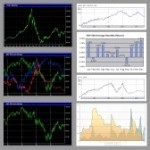YIELD CURVES AND THE ECONOMY
Yield curves are snapshots of bonds yield with similar asset class and credit quality, the review ranges from a month’s maturities to about 30 years. Yield to maturity, unlike coupon interest rates, is used in the measurement of the total return received by investors as a result of holding bonds up to maturity without the consideration of whether it will pay coupon rates or not. Yield curves are almost without business risk since they are used in the measurements of bonds that are issued by national governments. Governments of countries that have robust bond markets, such as the US, usually raise funds via bond issuing with different durations to other national governments and banks. The banks then sell the bonds to pension funds, individual and institutional investors, hedge funds and other banks. Just like other IOU, the bond will promise to pay a constant stated interest rate all through the bond’s life, and then followed by a full principal once it matures.
The yield curve has a short end which represents short-term maturities’ interest rates, which range from a period of 3 months to 2 years. The middle part of the curve comprises of interests rates on any maturities that range from three to seven years, lastly, the long end represents interest rates ranging from ten to thirty years. The curve’s short end in mainly influenced by monetary policy of the central bank and future policy market expectations, since short term rates are controlled by central bank through overnight interest rates changes. Monetary policy is basically controlled by bank reserve requirements, interest rates announcements, and open market operations which involves the management of liquidity via the buying and the selling of government securities. The long end is primarily determined by auctions used by the government to sell bonds of five to thirty years to banks. The yield and the prices are determined by the supply and demand once the bonds are in the secondary market.
The economy assessment by traders also determines bonds, with inflation being a major economic determinant of bond prices and yields. Rising inflation expectation or the actual inflation increase can outstrip fixed income of the bonds’ coupon payments, and therefore boosting the yield to maturity and reducing their value. It is the same case when the risk of inflation is increased by economic report releases which are stronger that expected. In the same measure, weak economic reports or falling inflation is healthy for bond prices but not so for the yields. The yield curves’ graphic illustrations are not available to investors on the go and for this reason; the determination of the curves steepness or shape can be done via looking at the difference between long-term and short-term interest rates. There is a popular measurement referred to as 10-2 spread and is the difference that exists between the yields on ten and two year’s government securities. Another popular measure in the US involves the ten year rate and the Fed funds rates, in this case the rate of the Fed funds is the charged overnight rate between commercial banks.




